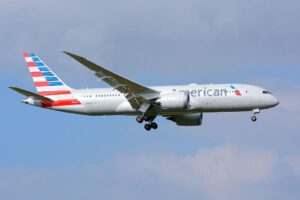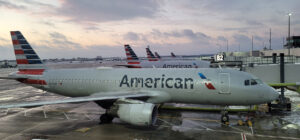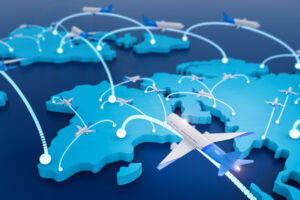anyone who knows about jet engines/turboprops?
#1
Original Poster
Join Date: Nov 1999
Location: if it's Thursday, this must be Belgium
Programs: UA 1K MM
Posts: 6,484
anyone who knows about jet engines/turboprops?
I've always had a few curious questions about engines that I wonder if anyone here can answer?
1.) It is my understanding that the main engines are started using hydraulic pressure from the APU -- is that correct? How does one start a jet engine without an APU? Is there an electric starter?
2.) What kind of engine is the APU?
3.) I know that there exist single engine turbo-prop aircraft -- are there any single engine jet aircraft in use?
4.) Are small multiengine turboprop aircraft much cheaper to produce and operate than small multiengine jet aircraft? Is this why choosing between for example a DH8 and a Canadair jet is a big difference?
Thanks to anyone who can enlighten me!
1.) It is my understanding that the main engines are started using hydraulic pressure from the APU -- is that correct? How does one start a jet engine without an APU? Is there an electric starter?
2.) What kind of engine is the APU?
3.) I know that there exist single engine turbo-prop aircraft -- are there any single engine jet aircraft in use?
4.) Are small multiengine turboprop aircraft much cheaper to produce and operate than small multiengine jet aircraft? Is this why choosing between for example a DH8 and a Canadair jet is a big difference?
Thanks to anyone who can enlighten me!
#2
Join Date: Sep 2001
Programs: Alaska Tanzanite 100K
Posts: 3,865
<font face="Verdana, Arial, Helvetica, sans-serif" size="2">Originally posted by TA:
I've always had a few curious questions about engines that I wonder if anyone here can answer?
1.) It is my understanding that the main engines are started using hydraulic pressure from the APU -- is that correct? How does one start a jet engine without an APU? Is there an electric starter?
Hydraulics or electric means start turning the turbine and increase pressure in the combustion chamber, which mixes air with a contraption that squirts out fuel, like hairspray... it catches fire, causing a vacuum, and forces air through the engine. An APU isn't needed, but some ground power source or really really powerful batteries are needed to start an engine. Yes, there are electric starters.
2.) What kind of engine is the APU?
mini jet engine.. normally a gas turbine the size of a tv, based on the size of a jet, then it can be the size of a small car
3.) I know that there exist single engine turbo-prop aircraft -- are there any single engine jet aircraft in use?
non commercial single engine jets do exist, like the F-16 fighter
4.) Are small multiengine turboprop aircraft much cheaper to produce and operate than small multiengine jet aircraft? Is this why choosing between for example a DH8 and a Canadair jet is a big difference?
turboprops are cheaper than jets because the main force of thrust is from the spinning blades, not the thousands of blades in the engines, so they're predominantly smaller and require less attention then jets. The DH8 vs CRJ is something you can't quite compare as they both have their own niche... and you won't ever see a CRJ landing on tiny runways like you will the Dash 8. It's all about customer preference and options... I personally prefer props to jets, but everyone thinks I'm crazy anyway...
</font>
I've always had a few curious questions about engines that I wonder if anyone here can answer?
1.) It is my understanding that the main engines are started using hydraulic pressure from the APU -- is that correct? How does one start a jet engine without an APU? Is there an electric starter?
Hydraulics or electric means start turning the turbine and increase pressure in the combustion chamber, which mixes air with a contraption that squirts out fuel, like hairspray... it catches fire, causing a vacuum, and forces air through the engine. An APU isn't needed, but some ground power source or really really powerful batteries are needed to start an engine. Yes, there are electric starters.
2.) What kind of engine is the APU?
mini jet engine.. normally a gas turbine the size of a tv, based on the size of a jet, then it can be the size of a small car
3.) I know that there exist single engine turbo-prop aircraft -- are there any single engine jet aircraft in use?
non commercial single engine jets do exist, like the F-16 fighter
4.) Are small multiengine turboprop aircraft much cheaper to produce and operate than small multiengine jet aircraft? Is this why choosing between for example a DH8 and a Canadair jet is a big difference?
turboprops are cheaper than jets because the main force of thrust is from the spinning blades, not the thousands of blades in the engines, so they're predominantly smaller and require less attention then jets. The DH8 vs CRJ is something you can't quite compare as they both have their own niche... and you won't ever see a CRJ landing on tiny runways like you will the Dash 8. It's all about customer preference and options... I personally prefer props to jets, but everyone thinks I'm crazy anyway...
</font>
#3
Original Poster
Join Date: Nov 1999
Location: if it's Thursday, this must be Belgium
Programs: UA 1K MM
Posts: 6,484
Cool -- thank you for the reply:
3.) I know that there exist single engine turbo-prop aircraft -- are there any single engine jet aircraft in use?
non commercial single engine jets do exist, like the F-16 fighter
what I meant here is, "are there any *passenger* aircraft with just one jet engine?" It's hard for me to recall any!
4.) Are small multiengine turboprop aircraft much cheaper to produce and operate than small multiengine jet aircraft? Is this why choosing between for example a DH8 and a Canadair jet is a big difference?
...turboprops are cheaper than jets because the main force of thrust is from the spinning blades, not the thousands of blades in the engines... I personally prefer props to jets, but everyone thinks I'm crazy anyway...
How much cheaper are they to buy? And do they run more efficiently?
I also don't mind turboprops. It's strange that people associate them with accidents, turbulence, or a bad flight. I think they're orders of magnitude safer than piston engines, right? And almost as safe as large commercial jets. I guess seeing a propeller bothers some people?
[This message has been edited by TA (edited 05-27-2002).]
3.) I know that there exist single engine turbo-prop aircraft -- are there any single engine jet aircraft in use?
non commercial single engine jets do exist, like the F-16 fighter
what I meant here is, "are there any *passenger* aircraft with just one jet engine?" It's hard for me to recall any!
4.) Are small multiengine turboprop aircraft much cheaper to produce and operate than small multiengine jet aircraft? Is this why choosing between for example a DH8 and a Canadair jet is a big difference?
...turboprops are cheaper than jets because the main force of thrust is from the spinning blades, not the thousands of blades in the engines... I personally prefer props to jets, but everyone thinks I'm crazy anyway...
How much cheaper are they to buy? And do they run more efficiently?
I also don't mind turboprops. It's strange that people associate them with accidents, turbulence, or a bad flight. I think they're orders of magnitude safer than piston engines, right? And almost as safe as large commercial jets. I guess seeing a propeller bothers some people?
[This message has been edited by TA (edited 05-27-2002).]
#4
Join Date: May 2002
Posts: 1
I hate to be the one to correct you on this but I feel I must. A jet engine uses AIR to start the engines. It goes like this.....APU supplies "bleed air" to the starter, the starter spins up to about 10-15,000 RPM, then a starter gear engages the main turbine....the rest of UAPremierExec's explination is correct...pressure, fuel etc.....He is also correct in his statement about not needing an APU to start the engines, but you do need an electrical source, and an air source. Once one engine is started you can cross bleed start the other engines using the air off of the running engine. An APU is convenient way to supply an Aircraft with lights,and heat/air while it is parked at the gate. It is a lot cheaper to plug it into a ground power source and use pre conditioned air to heat or cool it....That is why you always see the big (Yellow)hoses connected to the Aircraft while it is at the gate. Next, no single engine jets that I am aware of in the commercial field. Turbo props are cheaper to build and operate, tend to be a little more reliable and require less work to repair. Piston props are a thing of the past in commercial aviation strictly due to cost and speed. I hope this helps.
#5
Join Date: Aug 2000
Programs: I am an AS employee, but my comments do not represent the company in any official capacity.
Posts: 4,343
<font face="Verdana, Arial, Helvetica, sans-serif" size="2">Originally posted by TA:
what I meant here is, "are there any *passenger* aircraft with just one jet engine?" It's hard for me to recall any!
</font>
what I meant here is, "are there any *passenger* aircraft with just one jet engine?" It's hard for me to recall any!
</font>
#6
Moderator Hilton Honors, Travel News, West, The Suggestion Box, Smoking Lounge & DiningBuzz
Join Date: Jun 2000
Programs: Honors Diamond, Hertz Presidents Circle, National Exec Elite
Posts: 36,055
<font face="Verdana, Arial, Helvetica, sans-serif" size="2">Originally posted by UAPremierExec:
I personally prefer props to jets, but everyone thinks I'm crazy anyway... </font>
I personally prefer props to jets, but everyone thinks I'm crazy anyway... </font>
#10
Join Date: Mar 2002
Location: Dallas, TX
Programs: AA GLD, Marriott PLT, Hilton Diamond
Posts: 2,900
Good answers so far. But as usual, the answer is "it depends".
There are jet engines that can be started via electric motors. You won't find them on large commercial airliners, but you will see these a lot on small, business jets. Those *are* jet engines, just like on an airliner. Just smaller.
I can't think of any single *jet* engine *passeneger* airplane. Somone already mentioned the F-16, but I know that is not what you were thinking of.
And yes, turboprop is *much* more reliable than a piston engine. That's not to say piston engines are unrealible, but the turboprop is much more reliable. Less stuff going on in the turboprop. Its continously spins in one direction. Ignition happens *once*. All "phases" occur simultaneously (suck, squeeze, bang, blow). Piston engines have lots of parts mvoing up and down and in circles (pistons and crankshaft). Valves open an close. Ignition fires over and over and over. Etc. Lots of stuff going on there.
There are jet engines that can be started via electric motors. You won't find them on large commercial airliners, but you will see these a lot on small, business jets. Those *are* jet engines, just like on an airliner. Just smaller.
I can't think of any single *jet* engine *passeneger* airplane. Somone already mentioned the F-16, but I know that is not what you were thinking of.
And yes, turboprop is *much* more reliable than a piston engine. That's not to say piston engines are unrealible, but the turboprop is much more reliable. Less stuff going on in the turboprop. Its continously spins in one direction. Ignition happens *once*. All "phases" occur simultaneously (suck, squeeze, bang, blow). Piston engines have lots of parts mvoing up and down and in circles (pistons and crankshaft). Valves open an close. Ignition fires over and over and over. Etc. Lots of stuff going on there.
#11
Original Poster
Join Date: Nov 1999
Location: if it's Thursday, this must be Belgium
Programs: UA 1K MM
Posts: 6,484
Thanks for that info!
Is there a minimum size for a jet engine? I'm always amazed at how large (and how small) jet engines can be. For example, from a 777 GE90 to the small ones on a citation jet.
And the early ones that were essentially no bypass ratio. (you can still see them on really old 737s in service)
Is there a minimum size for a jet engine? I'm always amazed at how large (and how small) jet engines can be. For example, from a 777 GE90 to the small ones on a citation jet.
And the early ones that were essentially no bypass ratio. (you can still see them on really old 737s in service)
#12
Join Date: Mar 2002
Location: Dallas, TX
Programs: AA GLD, Marriott PLT, Hilton Diamond
Posts: 2,900
<font face="Verdana, Arial, Helvetica, sans-serif" size="2">Originally posted by TA:
Thanks for that info!
Is there a minimum size for a jet engine? I'm always amazed at how large (and how small) jet engines can be. For example, from a 777 GE90 to the small ones on a citation jet.
And the early ones that were essentially no bypass ratio. (you can still see them on really old 737s in service)</font>
Thanks for that info!
Is there a minimum size for a jet engine? I'm always amazed at how large (and how small) jet engines can be. For example, from a 777 GE90 to the small ones on a citation jet.
And the early ones that were essentially no bypass ratio. (you can still see them on really old 737s in service)</font>
There are some very small jet engines. APUS really are jet engines, as mentioned aabove. But if you mean engines that actually power the plane for flight, there *are* smaller ones that the one you see on the smallest citation. Note the engines on the Citation X are rather large for the size of jet. just look at how it dominates the look of the plane). Anyway, check out the Williams engine. The Williams EJ22, to be used on the Eclipse, is *very* small. Weighs a mere 85 pounds. Thrust to weight ratio of 9.5!!!
Check this out.
http://www.eclipseaviation.com/500jet/ej22engine.htm
#13
FlyerTalk Evangelist
Join Date: May 1998
Location: Massachusetts, USA; AA Plat, DL GM and Flying Colonel; Bonvoy Platinum
Posts: 24,256
If you really want small, it's quite practical to build a jet-powered model plane. There are books, such as Gas Turbine Engines for Model Aircraft by Kurt Schreckling and Keith Thomas or Model Jet Engines by Thomas Kamps and (again) Keith Thomas, that tell you how.
If you aren't all that interested but want to see a few, you can visit http://www.gasturbine.pwp.blueyonder.co.uk/page2.htm or check out the links on http://mdavis19.tripod.com/turbine/links.html .
What this comes down to is that, to someone designing an airplane to carry people, there is no relevant lower limit to the size of a jet engine. It becomes a business question of an engine company seeing a market for small ones and wanting to address it.
If you aren't all that interested but want to see a few, you can visit http://www.gasturbine.pwp.blueyonder.co.uk/page2.htm or check out the links on http://mdavis19.tripod.com/turbine/links.html .
What this comes down to is that, to someone designing an airplane to carry people, there is no relevant lower limit to the size of a jet engine. It becomes a business question of an engine company seeing a market for small ones and wanting to address it.
#14
Join Date: Oct 2000
Location: BKK when I'm not in Princeton
Programs: UA MP:1P for life, TG:Gold, CO:Gold
Posts: 2,017
<font face="Verdana, Arial, Helvetica, sans-serif" size="2">Originally posted by UAPremierExec:
Hydraulics or electric means start turning the turbine and increase pressure in the combustion chamber, which mixes air with a contraption that squirts out fuel, like hairspray... it catches fire, causing a vacuum, and forces air through the engine. </font>
Hydraulics or electric means start turning the turbine and increase pressure in the combustion chamber, which mixes air with a contraption that squirts out fuel, like hairspray... it catches fire, causing a vacuum, and forces air through the engine. </font>
The jet engine is based on the thermodynamic 'Brayton' cycle. Air is compressed in the compressor, and then energy is added by burning a fuel/air mixture in the combustion chamber which leads to a further increase in pressure. This is the critical phenomenon that permits the jet engine to operate. Gas at high temperature and pressure enters the turbine, where some energy is extracted (to power the upstream compressor in the engine. Since the gas in the combustion chamber was pre-pressurized, and then heated to higher pressures and temperatures, enough energy remains downstream of the turbine to[list=1][*] provide thrust in a turbojet/fan engine, or[*]to power a second turbine (e.g. turboprop).[/list=a]





















